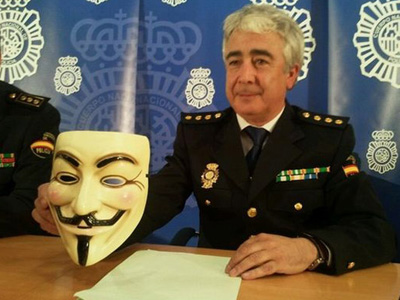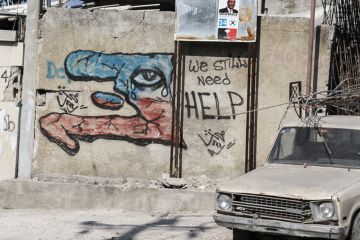Once upon a time, in a far-flung, sordid corner of the Internet, a group of hackers set out to right the wrongs of our era from behind a computer screen and a V for Vendetta-inspired Guy Fawkes mask.
Anonymous often prefaces its attacks with ominous, robotically-articulated Youtube warnings containing this phrase.
Anonymous, the Internet-based eminence grise of social justice, is a collection of self-described “hacktivists” bent on countering censorship and leading the world to freedom and democracy. Anonymous’ first users first began drifting together on 4Chan, an image-board website that allows users to post only as “anonymous.” 4Chan is to the internet what Fight Club was to consumerism, and Anonymous emerged from its Not-Safe-For-Work nest as a group of hackers coalescing around a social agenda.
As the Occupy movement swells in popularity and SOPA/PIPA threatened to label virtually every website on the Internet illegal, the loosely-integrated virtual vigilante collective has been gaining traction.
For example, Anonymous’ Operation MegaUpload took down the websites of the US Department of Justice, the US Copyright Office, the FBI, Warner Brothers Music, and Universal Music Group, among others, all in one afternoon in January as part of its largest bandwidth heist thus far.
Another campaign, Operation Payback, was executed in response to companies like Visa and Mastercard severing ties to WikiLeaks in concordance with a letter from the US State Department declaring WikiLeaks’ activities illegal. Similarly, Operation Avenge Assange, in a homage to WikiLeaks’ incarcerated founder Julian Assange, delivered DDoS attacks that took down PayPal for four days.
Unfortunately for Anonymous, the attack boomeranged back in the form of 14 FBI arrests this past September throughout the US and Europe. Just this month, the cultish leader of LulzSec, an Anonymous-affiliated group of high-level hackers, was unveiled to have been collaborating with the FBI. This may have led to the fall’s spate of arrests.
While these “Anonyops” were once limited to the taciturn alien blinking of a screen, the Occupy movement has led to the development of Anonymous as a more organized infrastructure that is spilling out onto the streets. Anonymous has medics, tech support, and citizen journalists on call, ready to be disseminated at public protests to help out and document police action. Evidence of police misdemeanor is sent in to Anonymous, who then hack their way to the offending officers’ personal information.Publicizing embarrassing information has been Anonymous’ new weapon of choice.
In September, NYPD officer Anthony Bologna pepper sprayed two defenseless women during an Occupy protest. A video capturing the event went viral on Youtube, and Anonymous reciprocated by divulging personal information, like previous legal actions, names of family members, and his address and phone number. Coupled with public pressure, the swiftly-meted reprisal caused the NYPD to reassign Bologna to Staten Island.
Anoymous’ adventures are far more dangerous than keeping a website down for a few days. In its most flamboyant coup so far, Anonymous hacked into the client list of Stratfor, a private intelligence company, this past Christmas. The hacktivists used the credit card numbers of these clients, mostly corporations and government-affiliated groups, to funnel a merry one million dollars to charities like the Red Cross.
Anonymous’ methodology du rigueur has been to flood targeted websites with Distributed Denial of Service (DDoS) attacks using a software called a Low Orbit Ion Cannon (LOIC) specially developed by Anonymous. Anyone can download the program and enter the target address: hacking becomes a layman’s affair. The idea is to overwhelm the website’s server by sending in a deluge of gibberish requests, which cannot easily be achieved from one computer. Multiplied by the thousands who are called to action, a DDoS becomes a machine-gun volley of packets making their way in Anonymous-engineered synchrony to the targeted website or IP address.Thismeans that people who do not necessarily want to be affiliated with Anonymous can be inadvertently co-opted into participating in DDoS attacks as well. During the MegaUpload operation, a link was widely circulated on Twitter that installed a LOIC program on the users’ computer to rope them into the DDoS shellfire…and make them eligible for up to 15 years in prison.
Furthermore, in an act of malicious meta-hacking, someone slipped a Trojan in one of the LOIC programs during the MegaUpload Operation, so many who clicked on the link were also freeing up access to personal information, including banking credentials.Due to these risks, Anonymous has developed alternative hacking methods. This past fall, Anonymous began relying increasingly on a strategy called Doxing, the particular forte of a subgroup called CabinCr3w. The group is in charge of scanning the Internet for all possible information about the target and then releasing it publicly , as in the case of Bologna.
Anonymous’ creativity, scattered organization, and swelling international ranks give it the staggering tenacity of a many-headed hydra, and the recent arrests that have given the FBI hope are unlikely to deter the hacktivists for a while.






